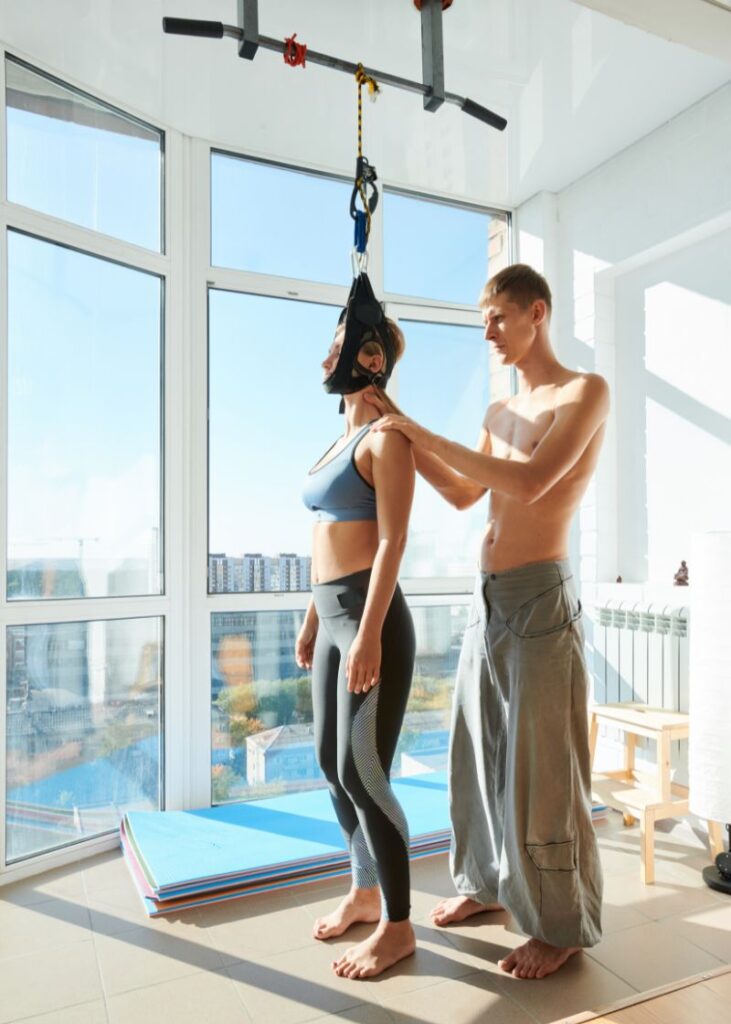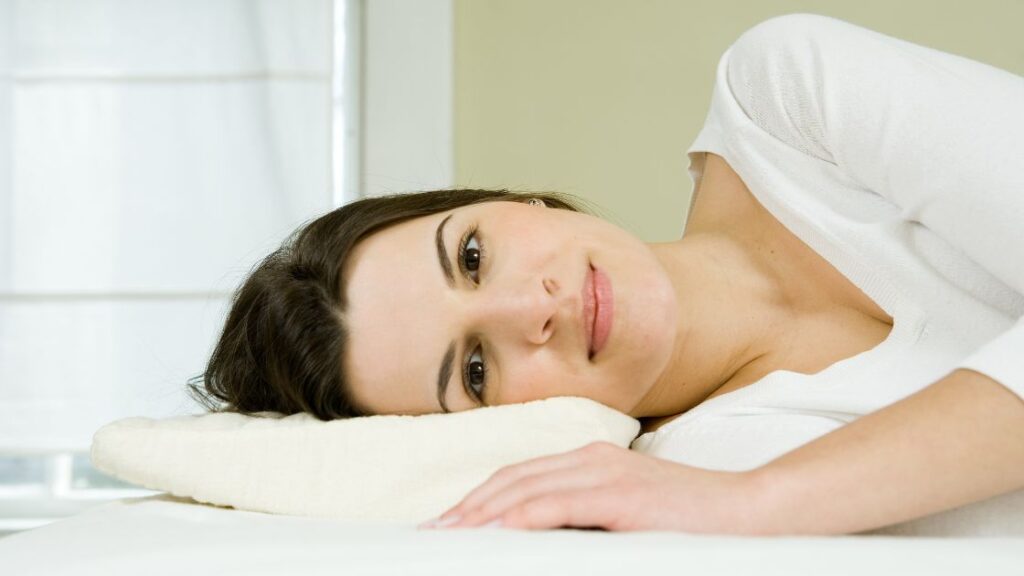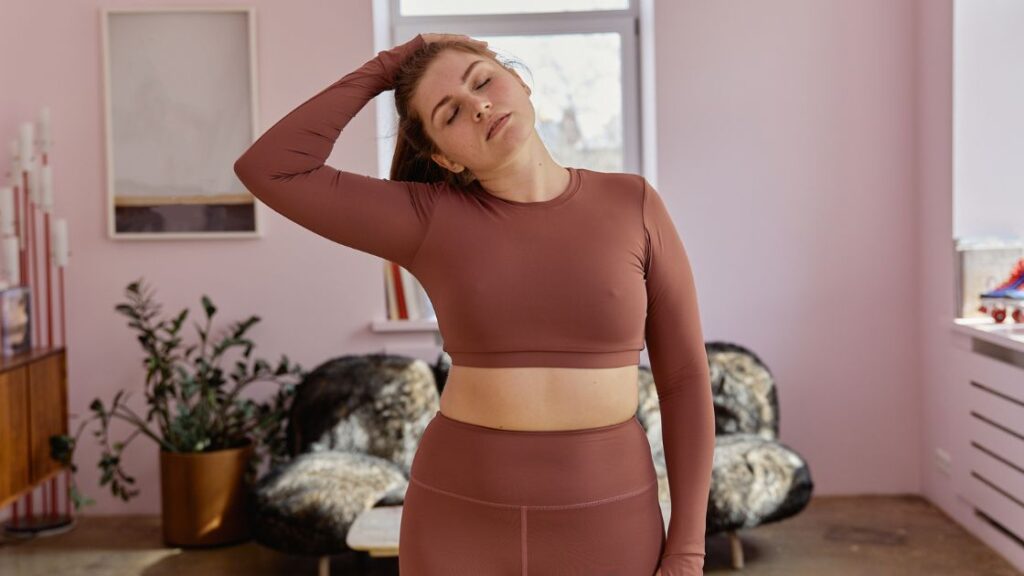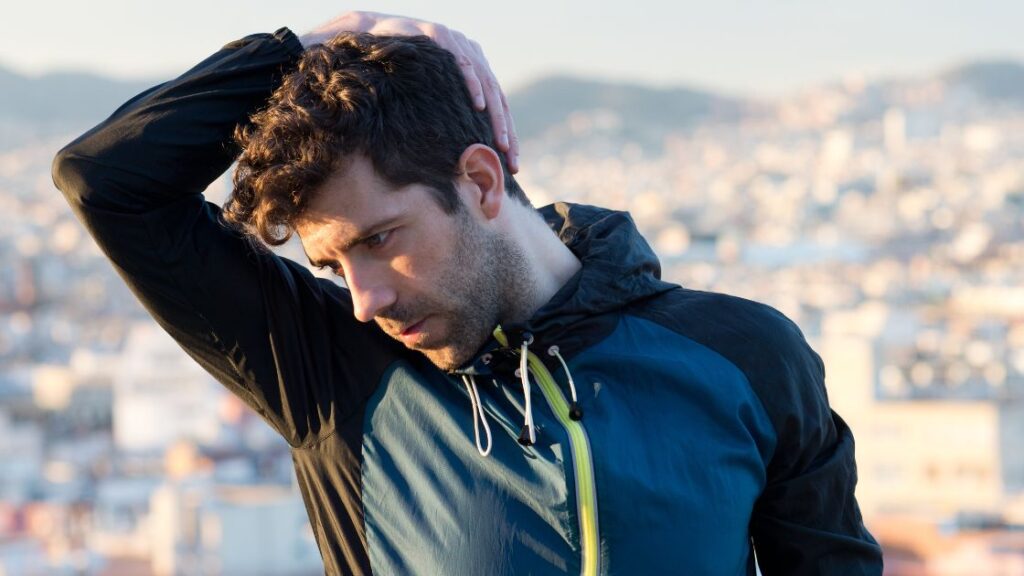Muscle Group of the Week: Scalenes
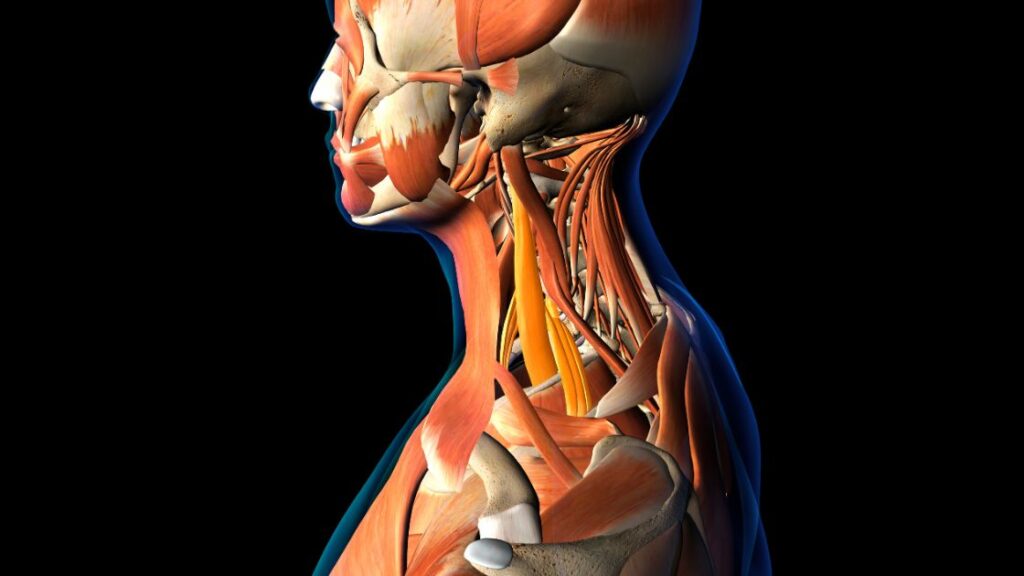
In the lateral aspect of your neck, you have three paired muscles known as the scalenes. The anterior, middle, and posterior scalenes form what is called the posterior triangle of the neck, which is located behind the sternocleidomastoid muscle.
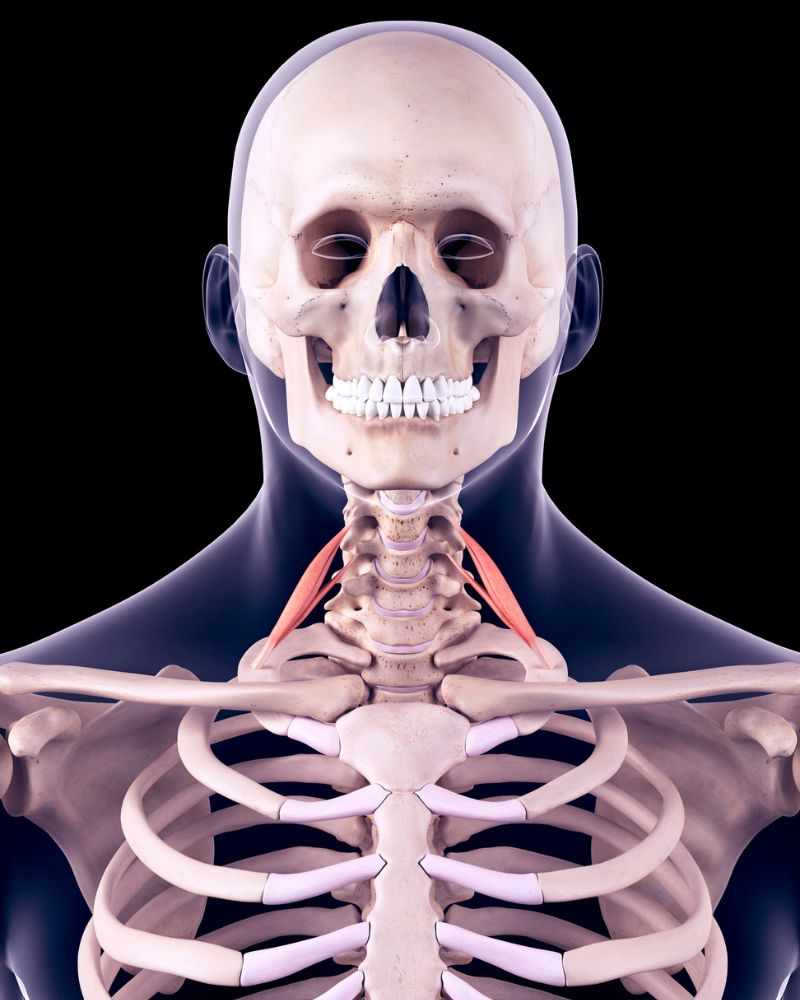
Scalenes
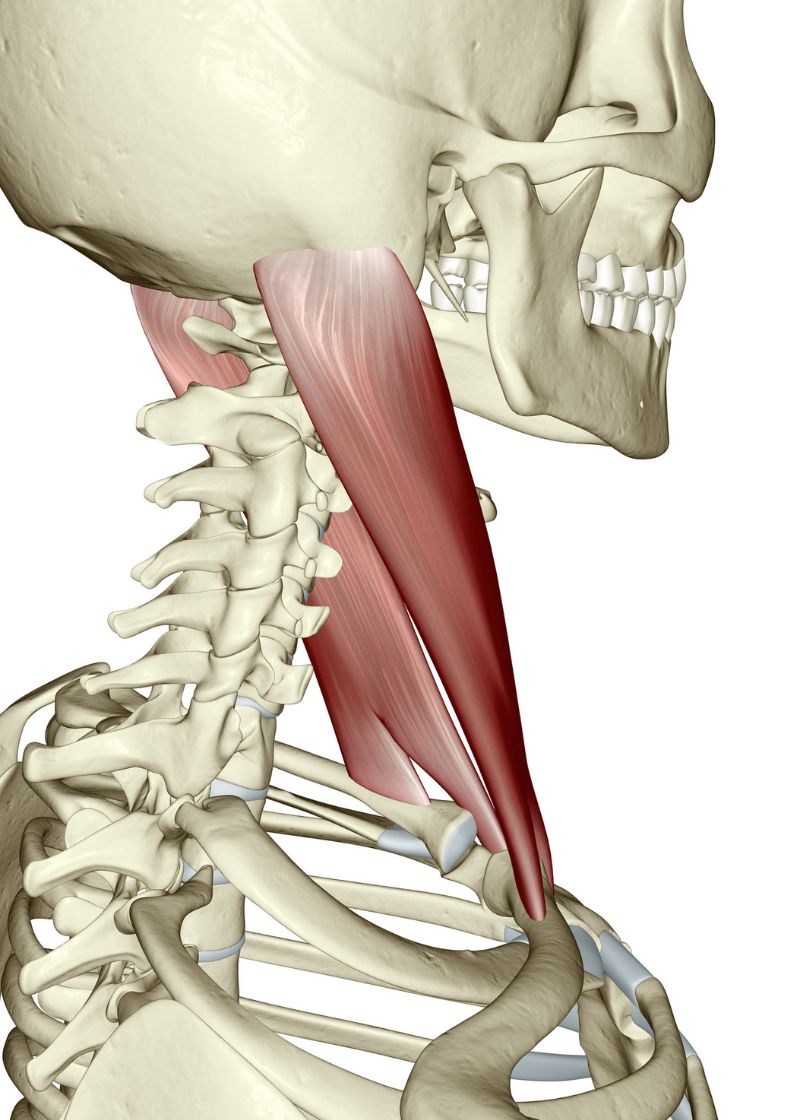
Sternocleidomastoid (NOT a scalene muscle; located anterior to the scalene muscle group)
Originating from the transverse processes of the cervical spine and inserting into the first two ribs, the scalene muscle group is an important part of your neck’s anatomy. So what do each of the three scalene muscles do? How can you keep them strong? Which stretches can you do at home to target the scalenes?
What Do the Scalenes Do?
With their powers combined, properly functioning scalene muscles support upright posture of the cervical spine. But did you know that they are also an accessory of the respiratory system? As they assist each other in elevating the first two ribs, they expand the ribcage in a similar way to the diaphragm (the primary inspiration muscle).
Now what does each individual scalene do on its own? In addition to maintaining posture and assisting with breathing, they’re mainly responsible for neck movement.
Anterior Scalene
Attaching at the transverse processes of C3-C6 and into the the inner border of rib 1, the anterior scalene is responsible for:
- Elevation of first rib
- Lateral flexion of neck
- Anterior flexion of neck
Middle Scalene
The largest and longest of the muscle group, attaching at the transverse processes of C2-C7 and also inserting into the scalene tubercle (that above mentioned area on the inner border of rib 1), the middle scalene’s functions include:
- Elevation of first rib (just like the anterior scalene)
- Lateral flexion of the neck (also like the anterior scalene)
Posterior Scalene
The only scalene inserting into rib 2, the smallest deepest scalene originating from transverse processes C5-C7 carries out:
- Elevation of second rib
- Lateral flexion of neck (same as the middle and anterior scalenes before it)
Making it Strong
When most of us think about strength training, targeting the neck muscles generally isn’t the first thing that comes to mind. We’re usually checking out the machines that work the arms, chest, abs, legs… pretty much anything that isn’t the neck!
If you try searching for neck strengthening equipment, you’re met with pictures of what appears to be orthodontic headgear and medieval iron masks. But don’t let the offputting sight of neck strengthening gear stop you from using them! Some of my patients say they’re great!
If you don’t want to buy neck strengthening devices, you can perform equipment-free exercises for your scalene muscles too! How are they done?
Anterior Scalene Exercise
- Side-lie on the floor, keeping your body straight
- Keeping your neck parallel to the rest of your body, let your head tilt downward
- Turn your head away from the floor and in the direction of your acromioclavicular joint (ACJ); the area where the shoulder blade connects to the collarbone at the top of the shoulder
- Flex your neck upward in the direction of ACJ
- Repeat flexion exercise 15-30 times
- Switch to side-lying on opposite side of body, repeat steps
Go to the 5:15 mark for a demonstration of anterior scalene exercise.
Middle Scalene Exercise
- Same as step 1 in anterior scalene exercise
- Same as step 1 in anterior scalene exercise
- Looking forward, laterally flex neck away from the ground
- Repeat flexion exercise 15-30 times
- Switch to side-lying on opposite side of the body, repeat steps
Go to the 2:45 mark for a demonstration of middle scalene exercise.
Posterior Scalene
- Lie prone on the ground
- Position your arms in front of your head, crossing them
- Rest forehead on crossed arms
- Lift head off the ground, keeping head above shoulder level and looking in the direction of your feet
- Repeat exercise 15-30 times
- Switch to side-lying position on opposite side of body, repeat steps
Go to the 2:23 mark for a demonstration of a splenius capitis and posterior scalene stretch.
The Best Stretches
What are some of the best stretches you can do to keep the scalenes strong and mobile?
Anterior Scalene
- Hook your fingers above your collarbone
- Gently rotate your neck to the same side you’re hooking onto
- Extend your neck backwards
- you should feel a stretch at the front of your neck where your fingers are placed.
- Hold stretch for 30 seconds
- Repeat on opposite side
Middle Scalene
- Begin stretch in neutral position, sitting or standing
- Place hand on the left side of head
- Guide the head in lateral flexion towards the right shoulder
- Hold for 30 seconds
- Repeat on opposite side
Posterior Scalene
- Rotate head towards the right shoulder
- Using right hand, pull the head forward as if trying to bring the left ear to the sternum
- Hold stretch for 30 seconds
- Repeat on opposite side
Keeping it Happy
While not ideal, it is normal to have tight scalenes. Neck pain is probably the most common complaint our massage therapists encounter at Moyer Total Wellness. Myofascial release, deep tissue massage, and heat therapy are some of the most effective treatments for knot removal.
Once knots are removed from the scalene muscles, it’s crucial to treat the surrounding muscles that have been weakened by the scalenes’ adhesions. The antagonistic muscles which require strengthening are located on the posterior cervical spine and include the longissimus cervicis, iliocostalis cervicis, spinalis cervicis, splenius cervicis, and semispinalis cervicis. A massage therapist or personal trainer can apply PNF stretches to both the scalenes and the antagonist muscles to strengthen both groups as well as improve joint range of motion in the neck.
Now You Know!
Don’t let your posture, breathing, and neck flexion be impacted by adhesed scalene muscles!

Katrina Jenkins
Author, Licensed Massage Therapist
Katrina Jenkins graduated from Towson University in 2013 with a Bachelor’s Degree in Health Science and worked as a nurse’s aide briefly before pursuing her true passion. She graduated from the Massage Therapy Institute of Colorado in April 2016 with honors and completed the Touch of Healers Scholarship Program the following summer. She has been a part of the Moyer Total Wellness Team since the summer of 2017.
Resources
Ann Asher, CPT. “How to Prevent Your Scalene Neck Muscles from Being Tight.” Verywell Health, 17 Nov. 2022, www.verywellhealth.com/what-makes-the-scalene-muscles-tight-4062171. Accessed 17 July 2023.
Martin, Donna. “Scalenes Anatomy: Origins, Insertions, Actions, Innervations – the Wellness Digest.” The Wellness Digest, 4 Nov. 2013, thewellnessdigest.com/scalenes-anatomy-origins-insertions-actions-innervations/#:~:text=Antagonists%3A. Accessed 17 July 2023.
Pirie, Egle. “Kenhub.” Kenhub, 2012, www.kenhub.com/en/library/anatomy/scalene-muscles.
Walker, Wendy. “Anterior Scalene.” Physiopedia, www.physio-pedia.com/Anterior_Scalene. Accessed 17 July 2023.
Photo Credit
Canva by microgen
Canva by ClaudioValdes
Canva by Darina Belonogova from Pexels
Canva by Zinkevych
Canva by Jupiterimages
Canva by SeventyFour
Canva by Science Photo Library
Canva by Science Photo Library
Canva by Hank Grebe

